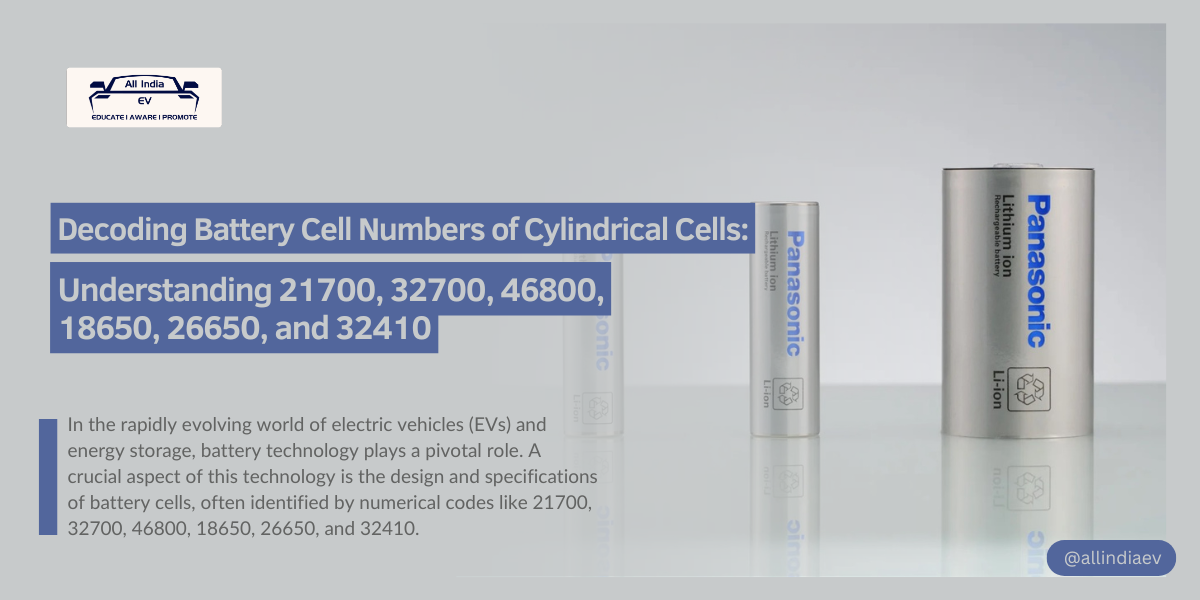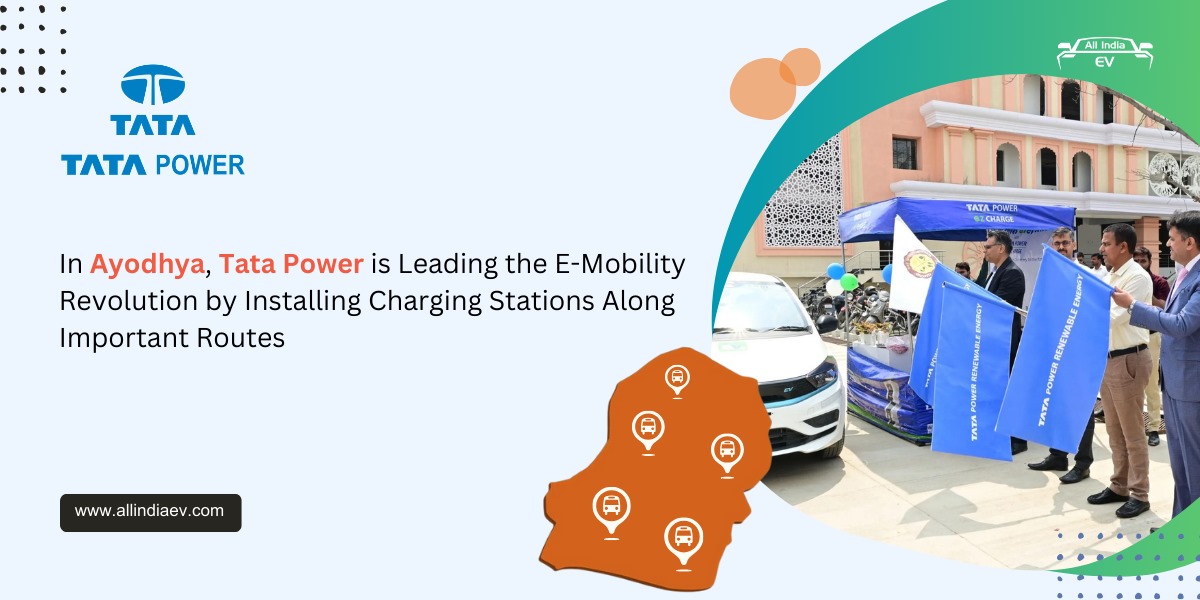
Decoding Battery Cell Numbers of Cylindrical Cells: Understanding 21700, 32700, 46800, 18650, 26650, and 32410
In the rapidly evolving world of electric vehicles (EVs) and energy storage, battery technology plays a pivotal role. A crucial aspect of this technology is the design and specifications of battery cells, often identified by numerical codes like 21700, 32700, 46800, 18650, 26650, and 32410.
These numbers are more than just labels; they provide specific details about the physical dimensions of the cells, which in turn influence the battery’s performance, energy density, and suitability for various applications. This article will delve into what these numbers mean, how they impact the overall efficiency of battery systems, and how various organizations in the EV industry are utilizing these specific cell types.
The Anatomy of Battery Cell Numbers
The numerical codes associated with battery cells such as 2170, 32700, 4680, 18650, 26650, and 32410 are standardized to describe the cell’s dimensions:
- The first two digits represent the diameter of the cell in millimeters.
- The next two or three digits denote the height or length of the cell in tenths of a millimeter.
For instance, in a 2170 cell, “21” refers to a 21 mm diameter, and “70” indicates a 70 mm height. These measurements are crucial for understanding the physical size of the cell and how it might fit into a battery pack or other devices.
A Closer Look at Common Battery Cell Types
18650
- Dimensions: 18 mm diameter, 65 mm height
- Overview: The 18650 cell is one of the most widely used cylindrical cells in both consumer electronics and electric vehicles. It has become a benchmark for battery desgin due to ots compact size, high energy density, and relatively low cost.
- Applications: Used in Tesla’s earlier models, power tools. laptops, and other portable electronics.
- Industry Adoption: Companies like Reliance utilize 18650 cells with Lithium Iron Phospahte (LFP) chemistry, emphasizing safety and stable performance in thier EV applications.
2170
- Dimensions: 21 mm diameter, 70 mm height
- Overview: The 2170 cell, also known as the 21700, is a newer, larger version of the 18650. It offers higher energy density and improved thermal management, making it a popular choice in the latest electric vehicles, including Tesla’s Model 3 and Model Y.
- Applications: Widely used in EVs, particularly in Tesla vehicles, due to its balance of size, capacity, and performance.
- Industry Adoption: Organizations like Ola and Godi are leveraging 2170 cells with Nickel Manganese Cobalt (NMC) and Lithium Iron Phosphate (LFP) chemistires, aiming to balance energy density, longevity, and overall vehicle performance.
32700
- Dimensions: 32 mm diameter, 70 mm height
- Overview: The 32700 is large cylindrical cell used in applications that require high energy storage with moderate current output. Its larger size allows for higher capacity, making it ideal for energy storage systems and electric scooters.
- Applications: Power tools, energy storage systems, and some electric vehicles.
- Industry Afoption: Companies like Godi and Nash Energy utilize 32700 cells with NMC and LFP chemistries, focusing on providing high energy capacity.
4680
- Dimensions: 46 mm diameter, 80 mm height
- Overview: The 4680 is a next-generation cell, gaining attention for its potential to revolutionize EV battery technology. Its larger size allows for higher energy capacity, improved thermal management, and lower production costs per kWh. Tesla has spearheaded the development of the 4680, integrating it into their future battery architecture.
- Applications: Next-generation electric vehicles, particularly future Tesla models, aiming for extended range and higher performance.
- Industry Adoption: Companies like Ola and Panasonic-IOCL are exploring the 4680 cells, with Ola combining them with Sterodot chemistry to push the boundaries of enerfy efficiency and performance.
26650
- Dimensions: 26 mm diameter, 65 mm height
- Overview: The 26650 cell is slightly larger than the 18650 and is designed to deliver higher current output while maintaining a compact form. It’s a versatile cell that balances capacity and power output, making it suitable for various medium-sized applications.
- Applications: Flashlights, power tools, and some electric vehicels and scooters.
- Industry Adoption: While not as commonly cited as the other cells, the 26650 remains an important option in niche applications where its specific size and power characteristics are beneficial.
32410
- Dimensions: 32 mm diameter, 410 mm height
- Overview: The 32410 is a larger cylindrical cell, often used in applications requiring significant energy storage. Its size allows for greater capacity and is typically used in heavy-duty applications where space is less of a ceoncern.
- Applications: Industrial energy storage, high-capacity battery systems, and larger electric vehicles.
- Industry Adoption: Nash energy has adopted the 32410 cells with LFP chemistry, focusing on high-performance energy storage systems and larger EVs, where capacity is more critical than compactness.
What Do These Numbers Tell Us?
The dimensions encoded in these numbers directly influence several critical aspects of battery performance:
- Energy Density: Generally, larger cells can hold more energy, which is crucial for extending the range of electric vehicles or increasing the operational time of devices. For example, the 4680 cell used by Ola offers higher energy capacity, allowing for more extended driving ranges in EVs.
- Thermal Management: Larger cells like the 4680 offer better thermal management properties, which is vital for maintaining battery health and safety over long periods and under heavy loads.
- Manufacturing Efficiency: Larger cells can reduce the complexity and cost of assembling battery packs by requiring fewer individual cells to achieve the desired capacity, which is a significant factor in reducing the cost per kWh.
- Application Suitability: The size and shape of a cell determine how it can be integrated into various devices, from compact electronics to large EV battery packs. For instance, the 2170 cell’s balance of size and capacity makes it ideal for most modern EVs, while the 4680 is poised to drive the next wave of innovation in EV performance and range.
Concluding the information
Understanding the significance of battery cell numbers like 2170, 32700, 4680, 18650, 26650, and 32410 is crucial for appreciating how battery technology influences the design and performance of electric vehicles and energy storage systems.
These numbers are not just arbitrary codes; they encapsulate vital information about the cell’s dimensions, which in turn dictate its energy capacity, thermal management, and overall suitability for specific applications.
As the EV industry continues to grow, these cell types will play a pivotal role in shaping the future of sustainable transportation and energy solutions. Companies across the industry are experimenting with these cells to optimize performance, reduce costs, and ultimately deliver better products to consumers.









